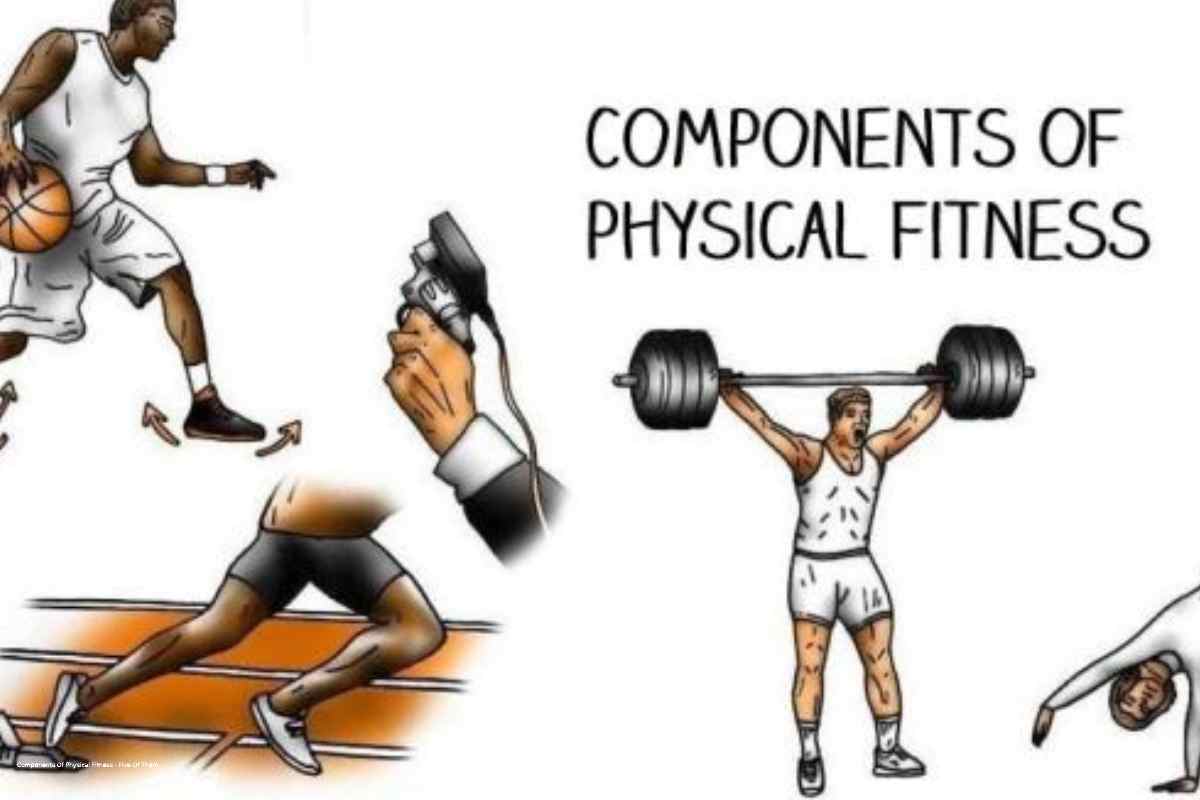components of physical fitness often use in our school systems, health clubs and fitness centers to measure how good a shape we really are. The 5 components that make up overall fitness are:
cardiovascular endurance
muscle strength
muscular endurance
flexibility
body composition
Overall fitness can be defined by how well the body performs on each of the components of physical fitness as a whole. It’s not enough to be able to bench press your bodyweight. You also need to determine how good you are at running a mile etc.
A Closer Look At Each Component:
Cardiovascular endurance
is the ability of the heart and lungs to work composed to provide the body with the oxygen and fuel it needs during sustained workloads. Examples would be jogging, cycling and swimming. The Cooper Run is most commonly used to test cardiovascular endurance.
Muscle strength
is the amount of force a muscle can generate. Examples would be bench press, leg press or bicep curl. The push-up test is most commonly used to test muscle strength.
Muscular endurance
is the ability of muscles to perform continuously without fatigue. Examples would be cycling, steppers, and elliptical trainers. The sit-up test is most commonly use to test muscular endurance.
Elasticity
s the ability of each joint to move finished the available range of motion for a given joint. Examples would be widening individual muscles or the ability to perform specific functional movements like the lunge. The sit and reach test is most commonly use to test flexibility.
Body composition
is the quantity of fat mass compare to lean muscle mass, bones and organs. This can measure by underwater weighing, skinfold measurements, and bioelectrical impedance. Underwater weighing is careful the “gold standard” for measuring body fat, however very few sites are set up for this type of measurement due to the size and cost of the equipment require.
Muscle Strength Is One Of The Components Of Physical Fitness
Muscle strength is the ability of a muscle group to exert force or lift and carry weight. The stronger your muscles are, the heavier weight you can lift and move (10).
Muscle strength can vary between different muscle groups. For example, you might have strong glutes and quads but weaker biceps.
To ensure well-rounded muscle strength, it is important to prioritize muscle strength training of all major muscle groups such as legs, arms, core, shoulders, back and hips.
To measure your muscle strength, you can test your One-Rep Max, which is the maximum weight you can lift for one repetition.
Muscular Endurance Is One Of The Components Of Physical Fitness
In conclusion, Unlike muscle strength, which measures how much weight you can lift or move, muscular endurance tests how long your muscles can withstand an exercise .
Along with strength training, make sure to include some muscular endurance activities in your routine, such as:
weight training. In its place of aiming for a low rep range, try lifting lighter weights with a higher rep range — like 20 reps or more — until your muscles tire.
Isometric exercise. The body is hold in the same position for a longer period of time. For example, hold a plank for as long as possible.
Longer training time. When you use your muscles for long periods of time like cycling, running, swimming or climbing stairs, your muscular endurance require to keep you going. The more you exercise, the longer your muscles can go before tiring.

